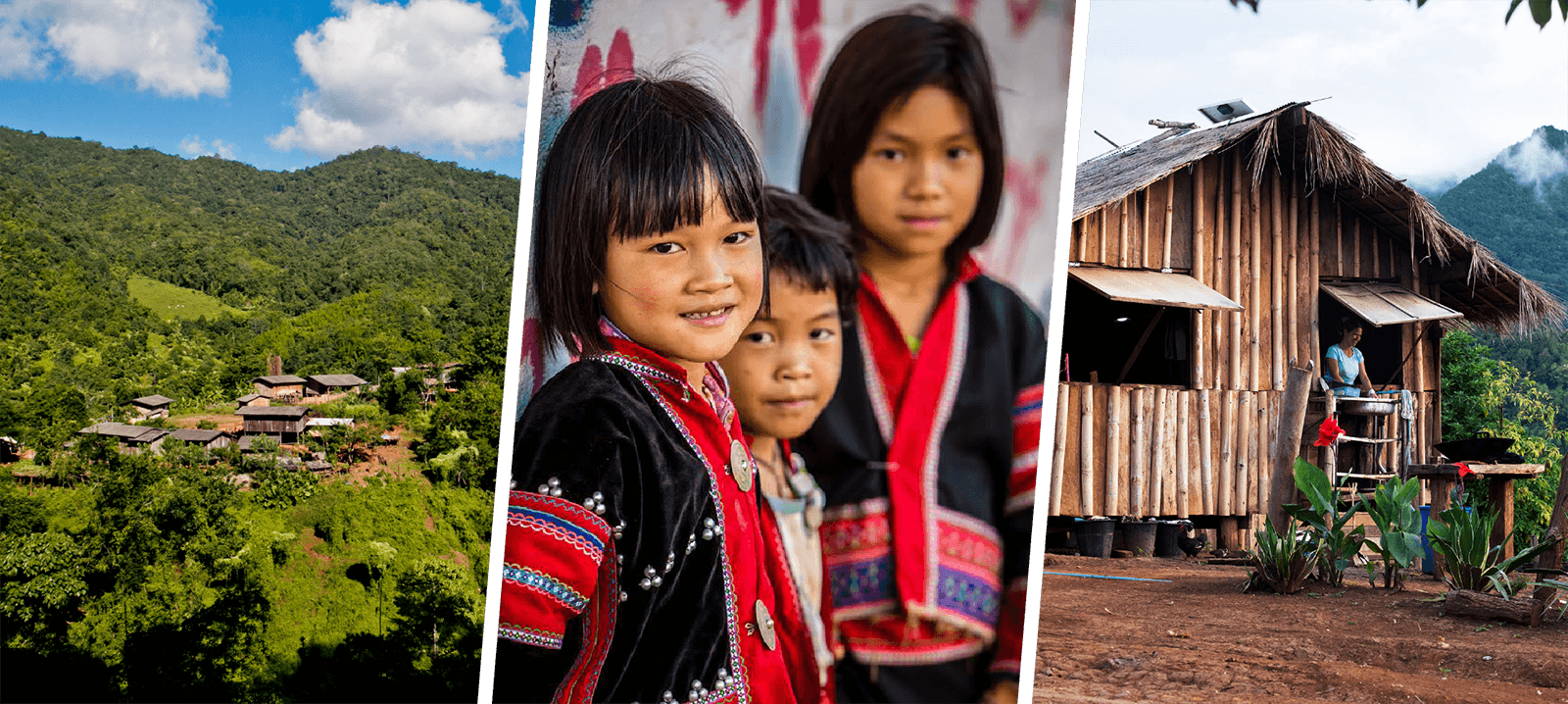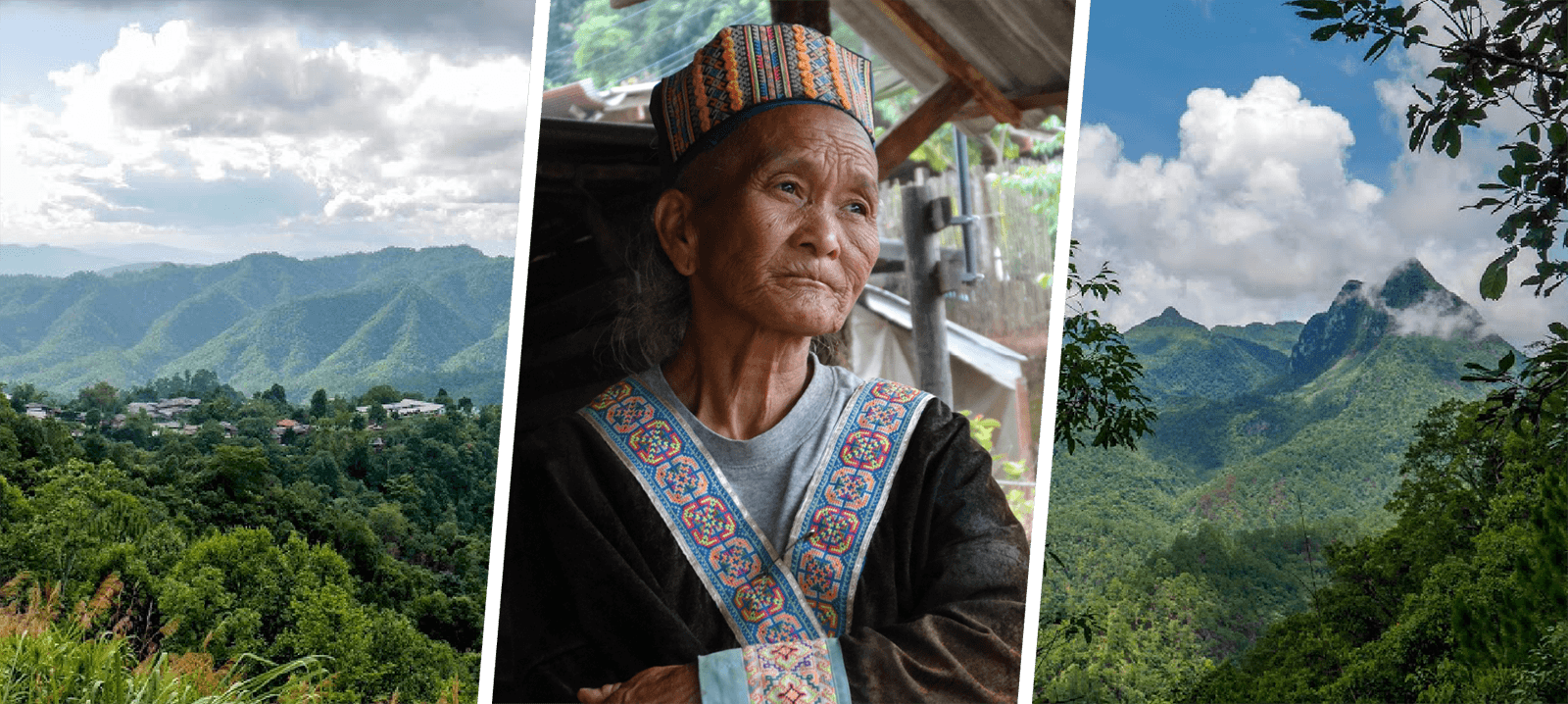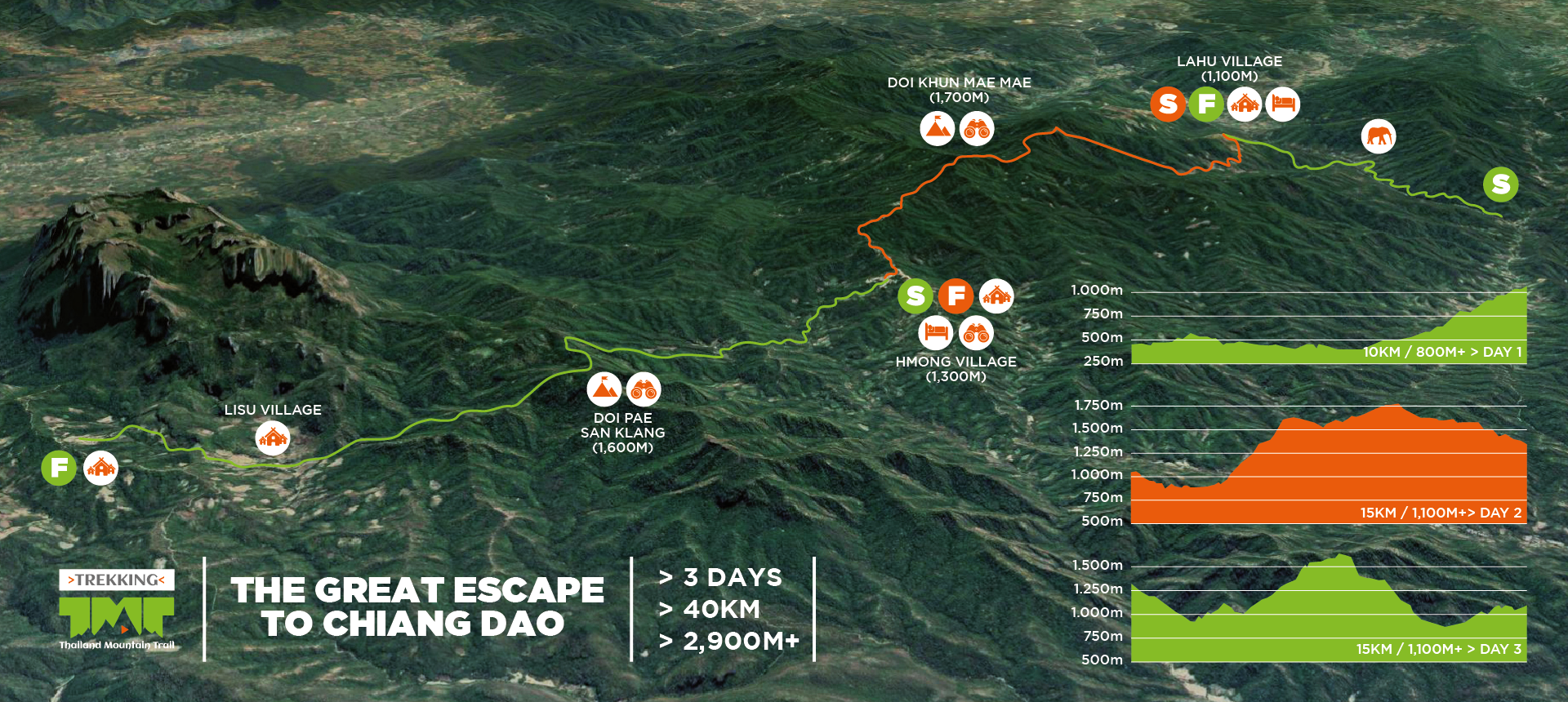The Great Escape To Chiang Dao

The main target about creating TMT01 was to find a route from Chiang Mai to the highest mountain range of Thailand, Chiang Dao. Standing out against the sky, on the 1st time we discovered this mountain where rock and jungle meet and blend, we were fascinated. With several summits at 2,000 meters high and a profusion of lesser peaks and ridges, this mountain barely known from tourists is definitely the most beautiful one in Thailand.
* * *
This trip will lead us on the last part of TMT01 until Chiang Dao mountain range. For 3 days we will hike in the highest mountains of Thailand until the most iconic of them. It’s a wonderful and colossal journey in remote hill-tribe areas with 2 overnights in local mountain villages. That’s the best of what Thai mountains can offer.
Characteristics of the Trip
8,750 THB
All-inclusive priceDuration
![]() 3
Days
3
Days
Distance
![]() 40K
40K
Elevation Gain
![]() 2900M+
2900M+
Difficulty
![]() 3 Peaks
3 Peaks
Trip Type
![]() Trek & Discover
Trek & Discover
Finish: Na Lao Mai (2h30 transfer)
90% single-track trail, 10% double-track trail
Highlights: Jungle, Rivers, Hill-tribe villages, Summits
2 Nights in Lahu and Hmong villages
Duration: 5-7 hiking hours a day
Pick up & Drop off at your hotel (city center)
See details
Available all year round
Closed: April / May
1st Day
![]() 9K
9K ![]() 700M+
700M+
We start the 1st day by following the river of Mae Taeng. It’s one of the most beautiful in the province of Chiang Mai. Settled down in the valley and surrounded by a luxuriant tropical forest, the river is known for its rapids. It’s a great place for rafting but we will go down walking in the jungle alongside the river. It’s humid and it’s wild; several times, we have to use the machete to clean the trail and move forward.
After 5 kilometers in one of the wildest jungle we know, finally we leave the main river and turn left to follow one of its streams. The trail is now wider; the pace is easier; we enjoy a comfortable hike on a flat route alongside the river. At several points we have to cross the river until we reach a 15-meter high waterfall. We will make a break there to recharge our batteries before the last difficult part of the day.
It’s a challenging ascent we must tackle with until we reach the overnight Lahu village. In 2 kilometers we will hike up 650m on a steep footpath. It’s a substantial effort that each of us will manage at one’s own pace. On arrival at the village, the wonderful and wide view over the valley of Mae Taeng is a well-deserved reward. We have time to enjoy the scenery until sunset. Soon the host family is calling us for having dinner in their traditional bamboo house.
2nd Day
![]() 15K
15K ![]() 1’100M+
1’100M+
After a refreshing night, it’s time for having breakfast on the terrace of our house. We enjoy the sunrise on the valleys and mountains around as the village is located on a ridge at 1100m with almost a 360-degree view. Warmed by the first rays of the sun, we leave this enchanting place to run a path down through fields and hills. When we reach a tiny Lahu village, we can see in the distance the summit of Doi Pha Sam Liam the objective of the day.
The biggest challenge is now waiting for us: 800m elevation gain in 2 kilometers to conquer Doi Pha Sam Liam (1650m). It’s a long climb in a mix of tropical forest and pine trees. We follow a steep ridge until the foothill of the summit then turn left for the last meters. At the top of the peak the reward is huge and eases the fatigue immediately. As far as our eyes can see, it’s a sea of green mountains all around.
Going down the peak, it’s a total change of atmosphere. We enter a magnificent forest of pine trees. The ground is soft covered with millions of pine needles. It’s a real pleasure to hike there. For a couple of kilometers, we walk through the trees on a large ridge. Arrived in Doi Pakhia, we observe now very clearly the massive mountain range of Chiang Dao. We will sleep there in a Hmong village with this beautiful view in the distance.
3rd Day
![]() 16K
16K ![]() 1’100M+
1’100M+
In the morning of the 3rd day, after a long way down on a dirt road, we must tackle with a steep path in the forest. This is the most difficult part of the route. For some unknown reasons, local people have traced their path straight up in the mountains. Until we reach the ridge of the mountains, it’s a long succession of soft and steep slopes. It requires some strength to finally stand at the top.
Finally we reach a long ridge with a beautiful view on the mountains. At the beginning of the ridge, on the South side, we can observe the Hmong village we left in the morning; we will be surprised to see how far we have hiked. At the end of the ridge, the North side offers a wonderful panorama: the Lady Mountain stands in the distance on the left; the Chiang Dao mountain range offers its best side on the right.
The last part of the route goes down back to the valley. The descent is long, technical and steep. It goes through forest and jungle. After reaching a 1st Lisu village we will hike up again to reach the 2nd village, Na Lao Mai. We will stop there at the foothills of Chiang Dao before driving back to Chiang Mai.
Accommodation 1st Night
Kup Kap is a wonderful Lahu village. Located on a ridge, the view on the valleys and the other mountains is wide and impressive. We could enjoy both beautiful sunrise and sunset from the village. Even if the village might welcome some tourists sometimes, it has stayed very traditional with typical bamboo houses. We will eat and stay in huts that we have renovated with a local family we have known for a long time. It’s almost like home here!

Accommodation 2nd Night
Ban San Pakhia is one of the few villages located in the Chiang Dao area. Hmong people like to stay high in the mountains; first they settled just at the foothills of the summits then moved to this location to create a bigger village. It has now 80 families who live mostly from growing oranges. TMT has established long relationships with the inhabitants: Pakhia was the 1st village where we implemented the ‘Sport for Kids’ project in 2015. We had the privilege to build with the head of the village the bungalows in front of the mountains where we will stay at night.






